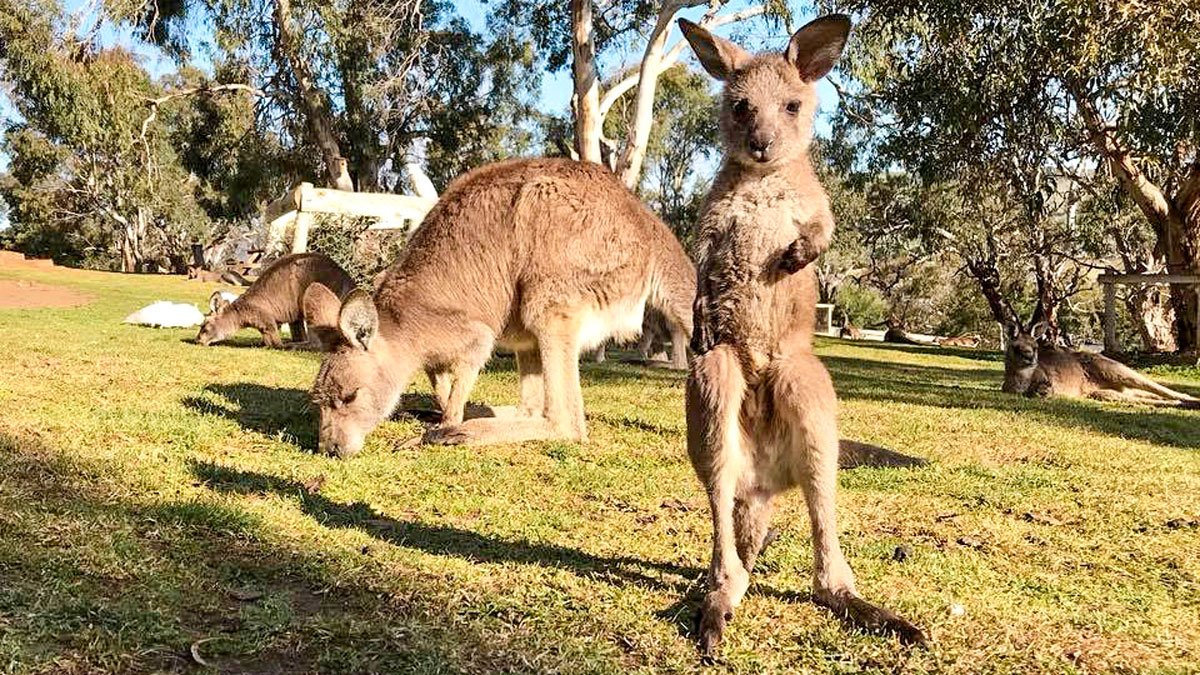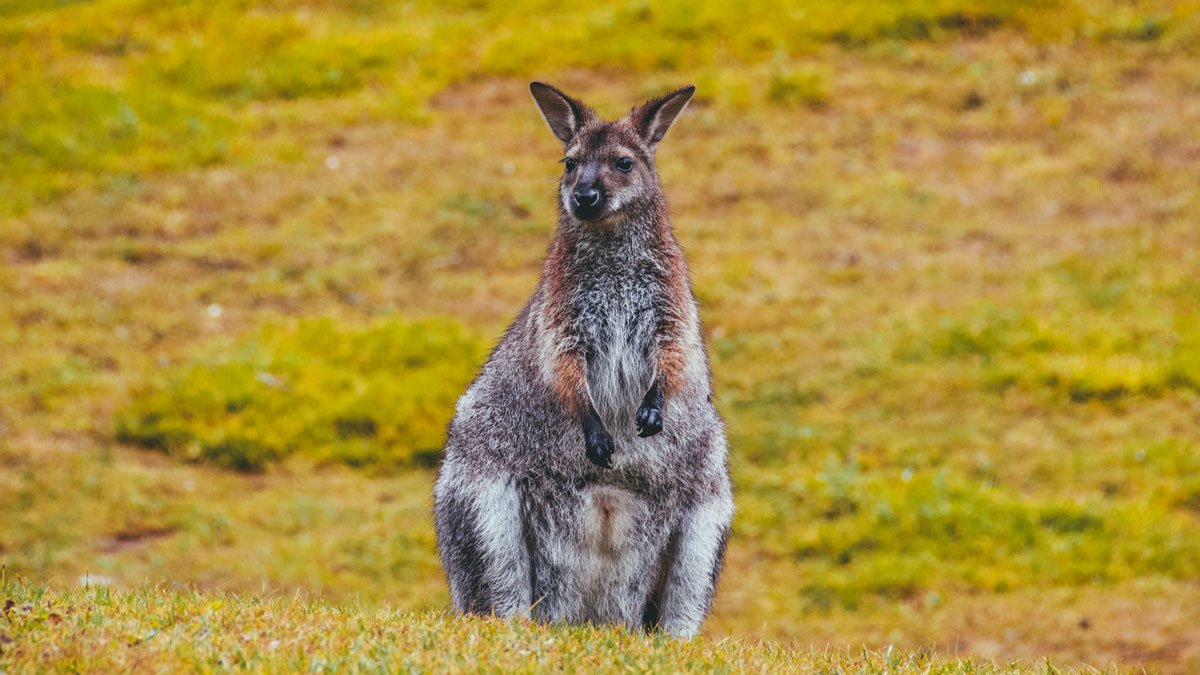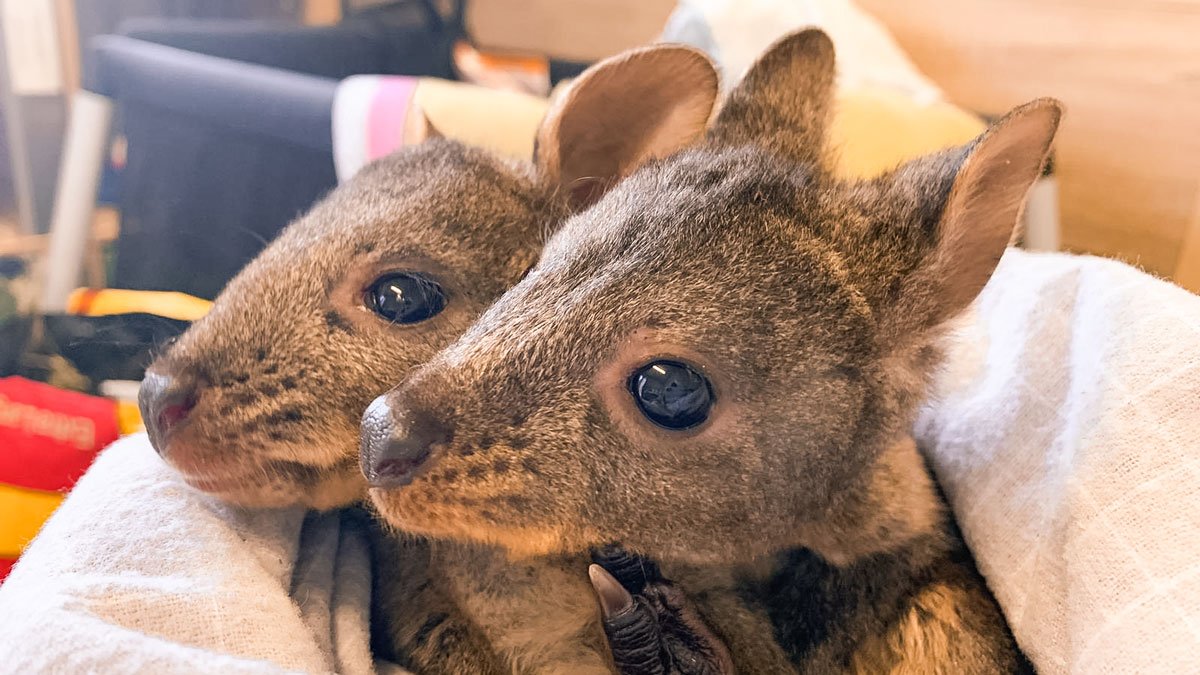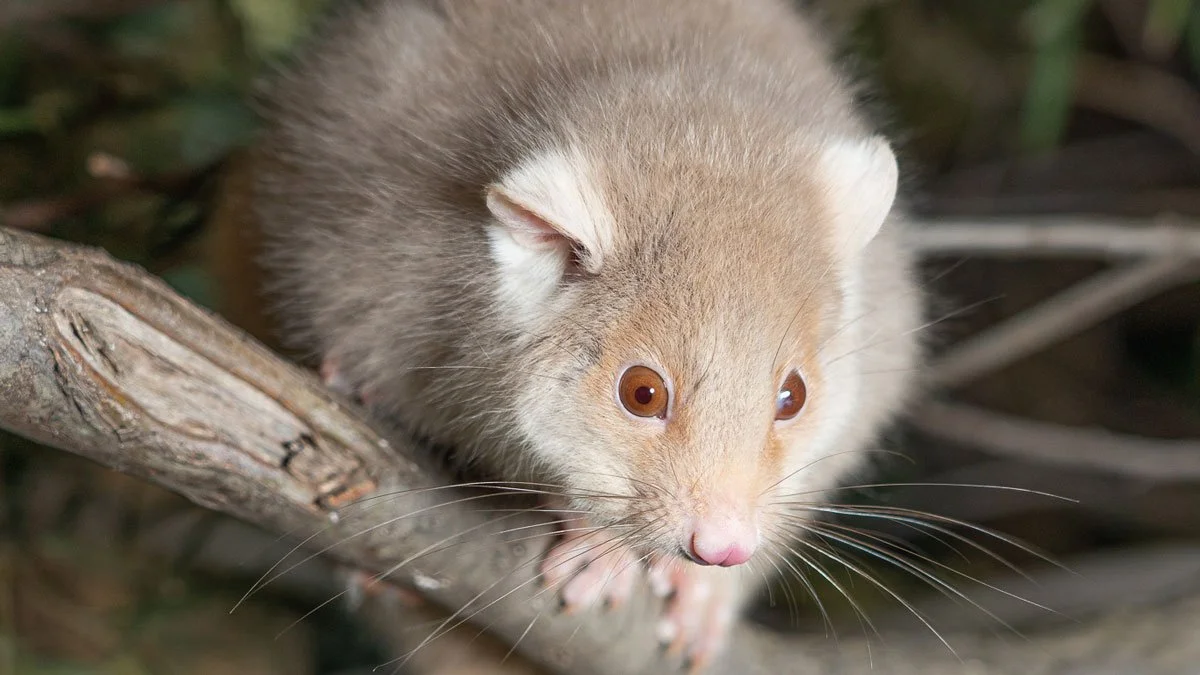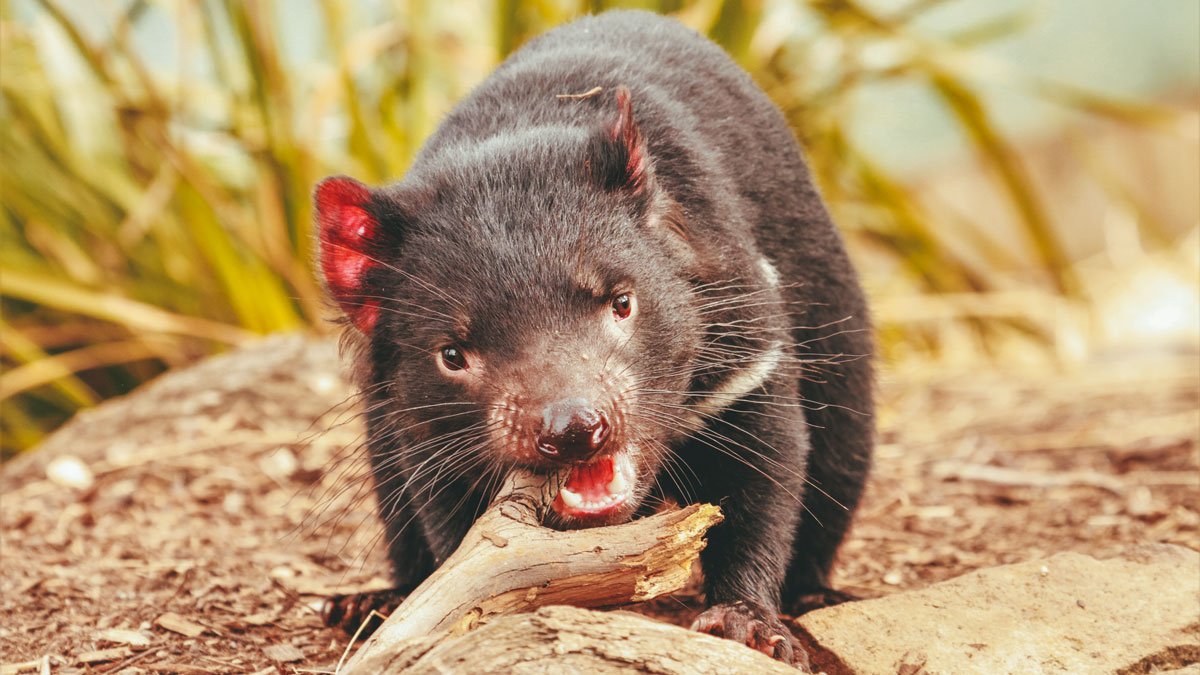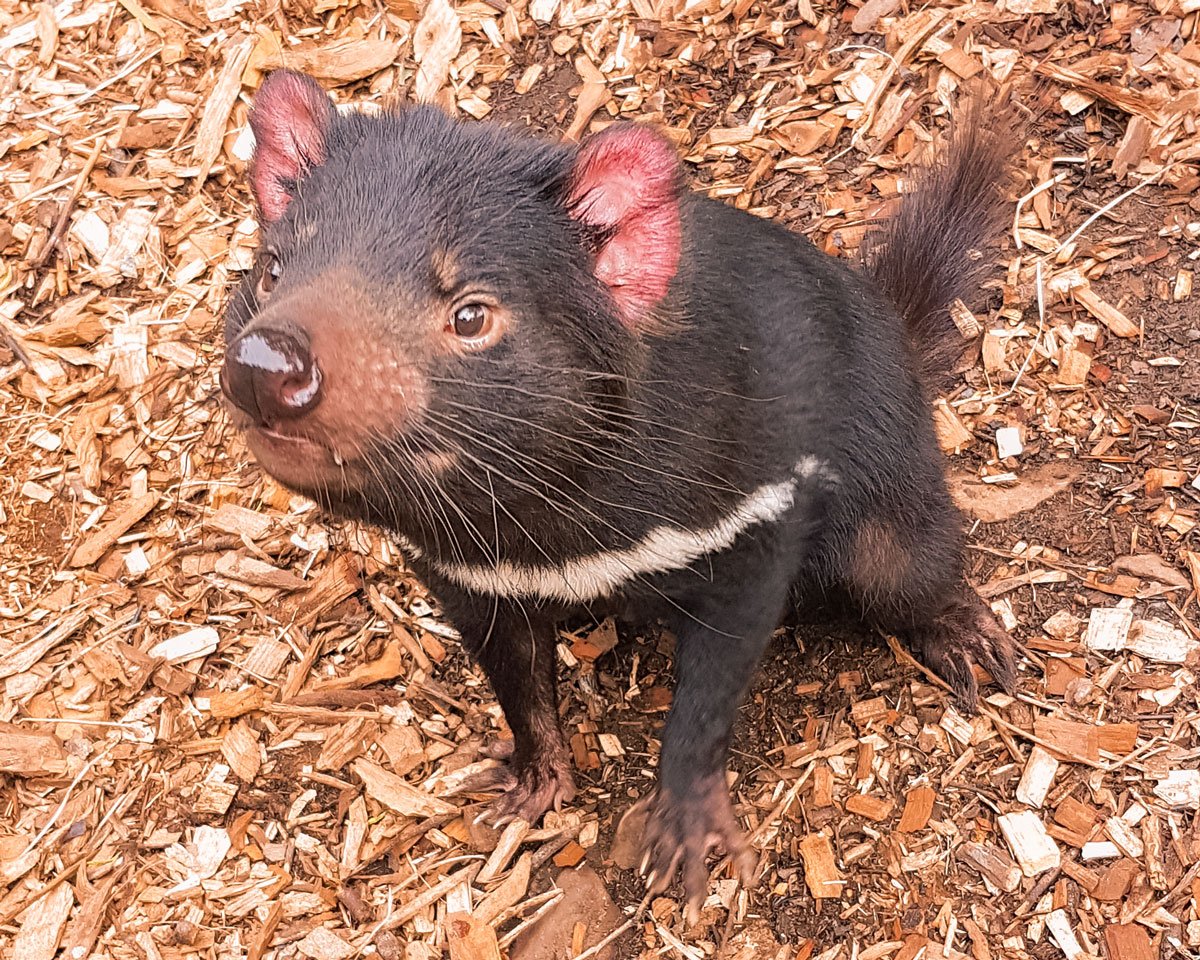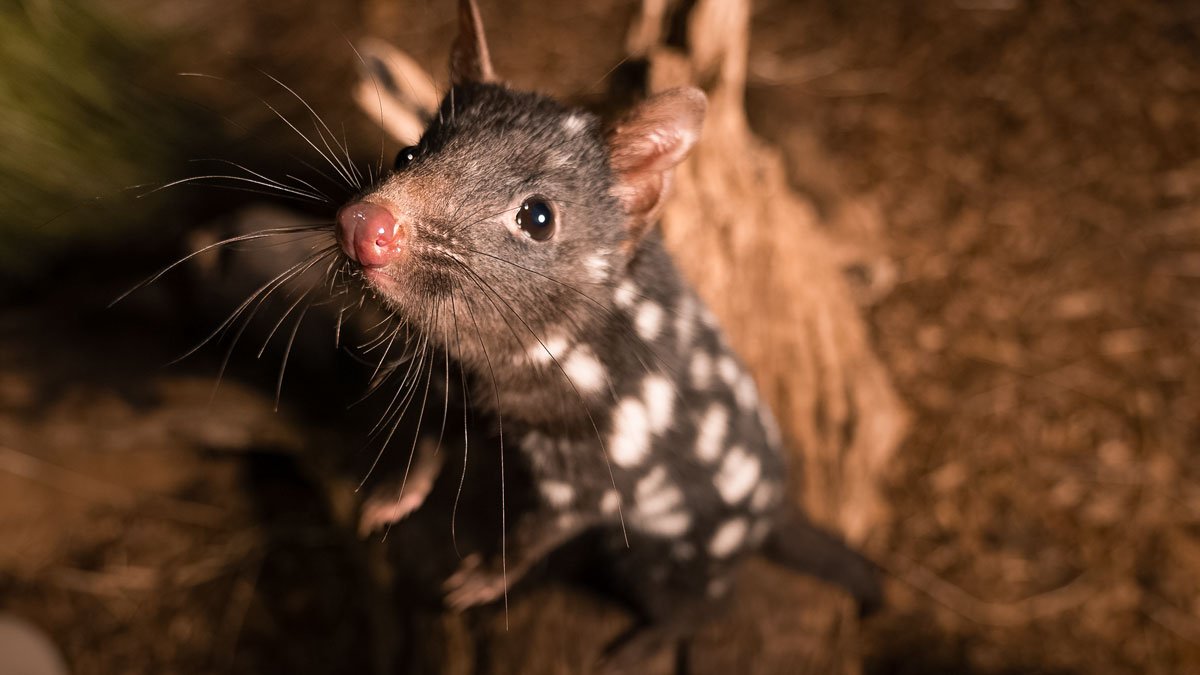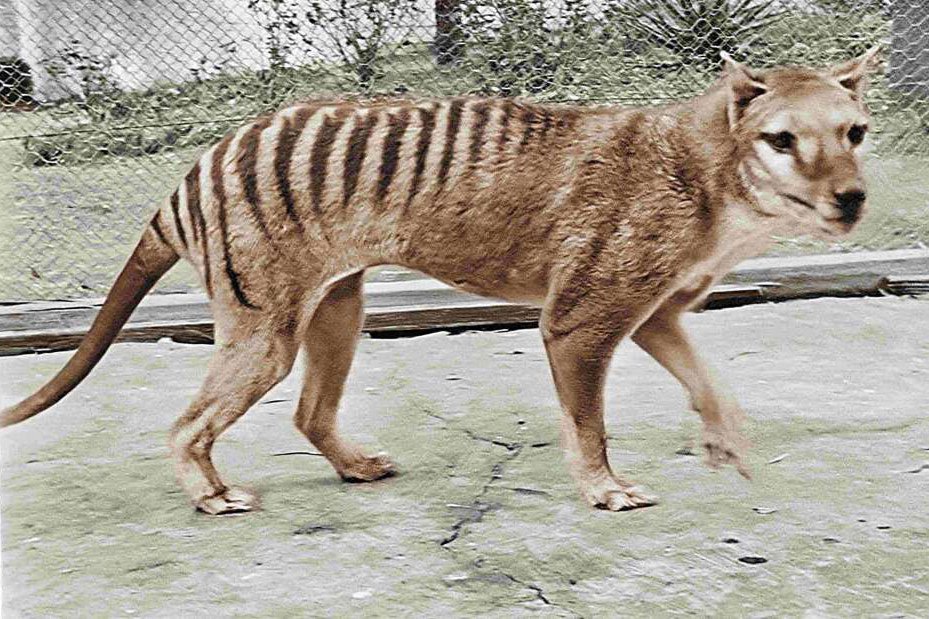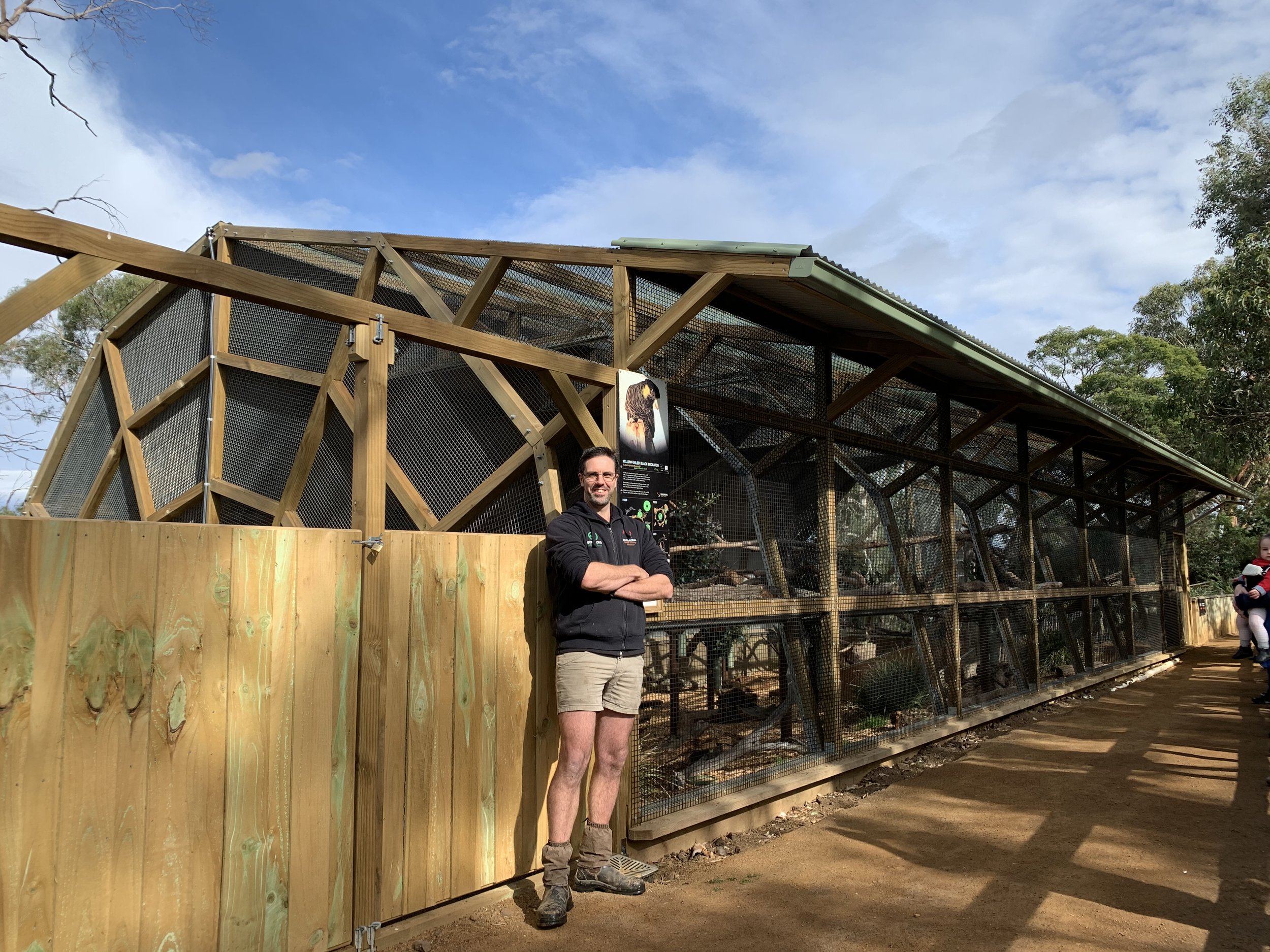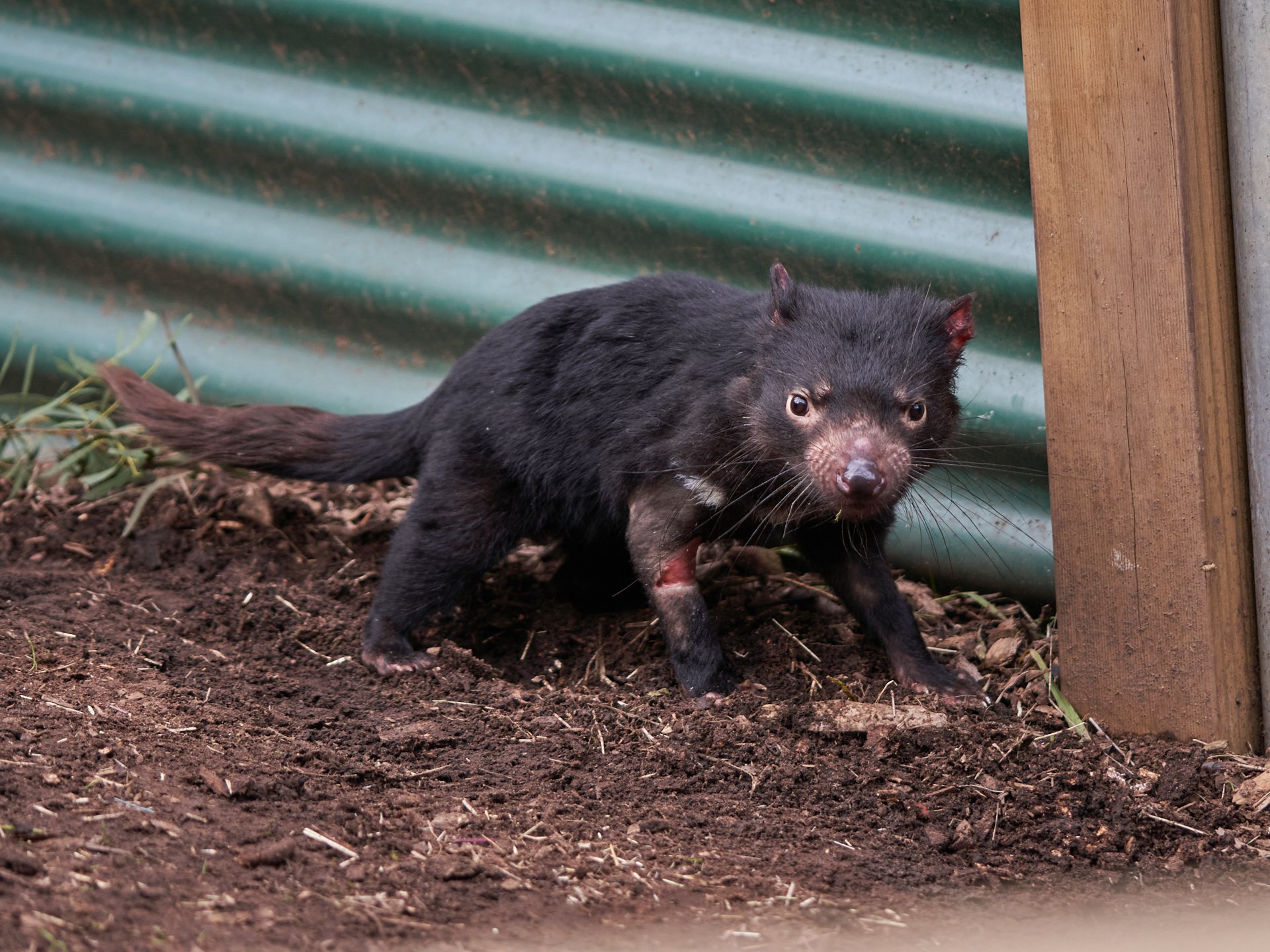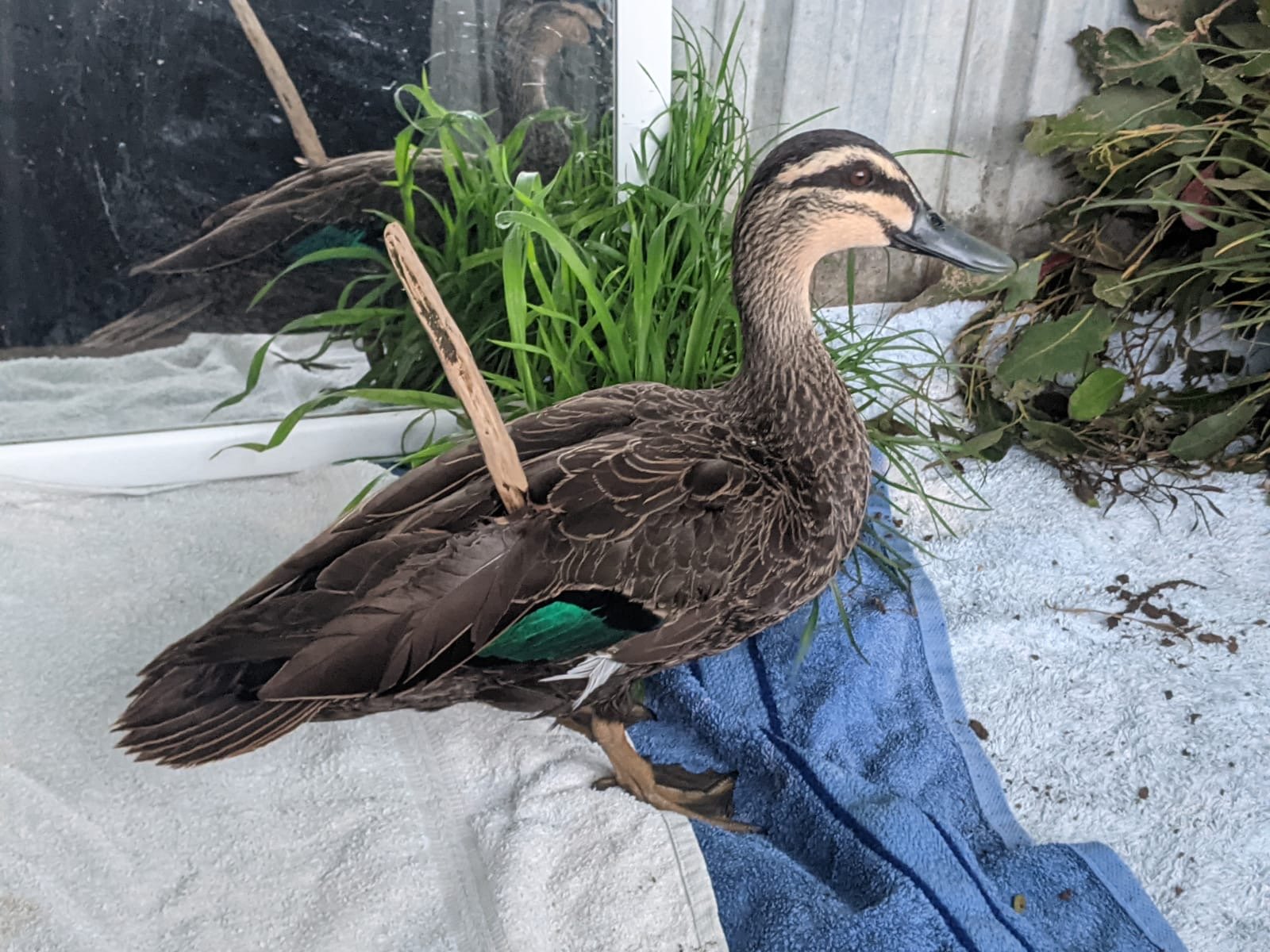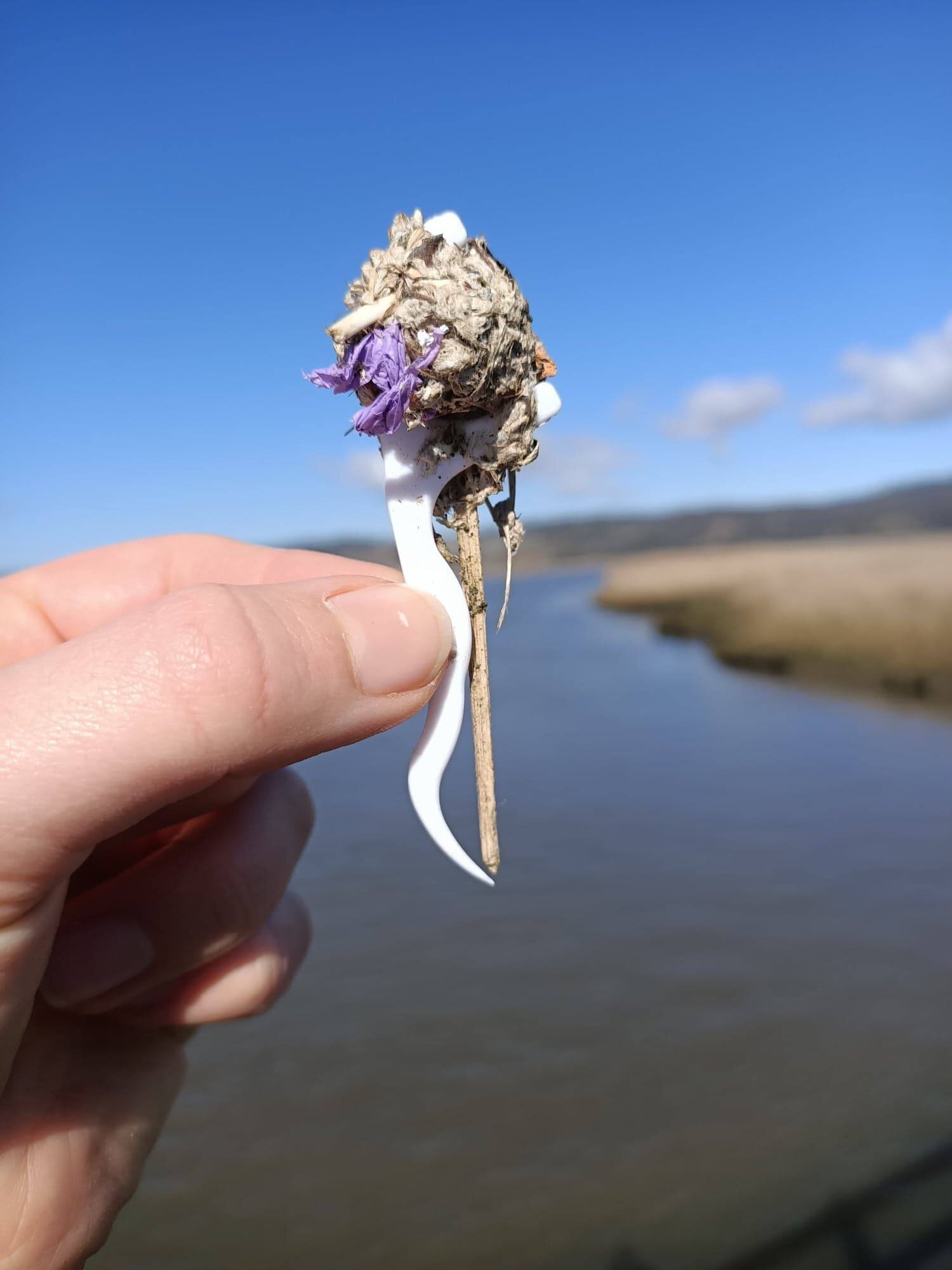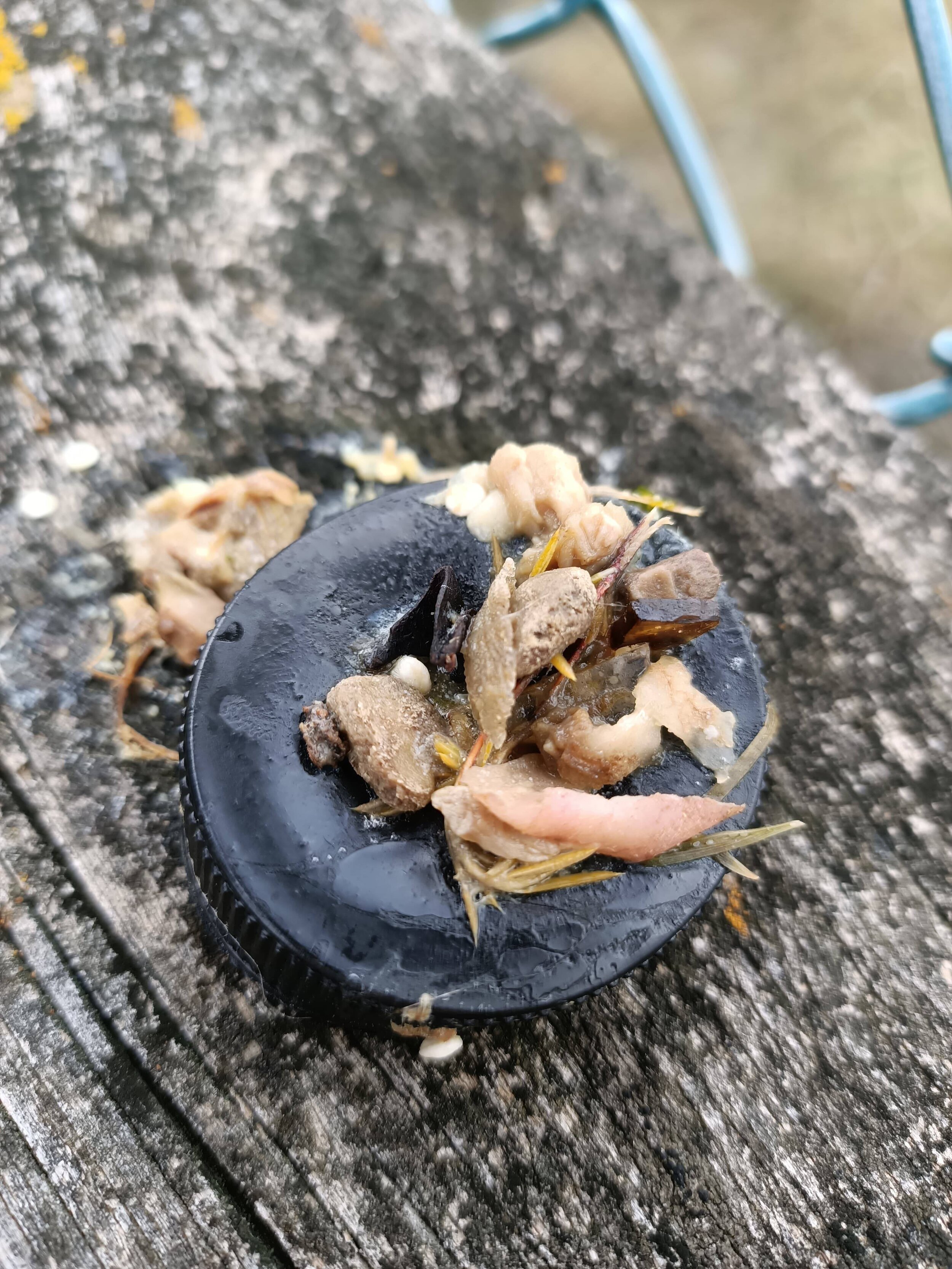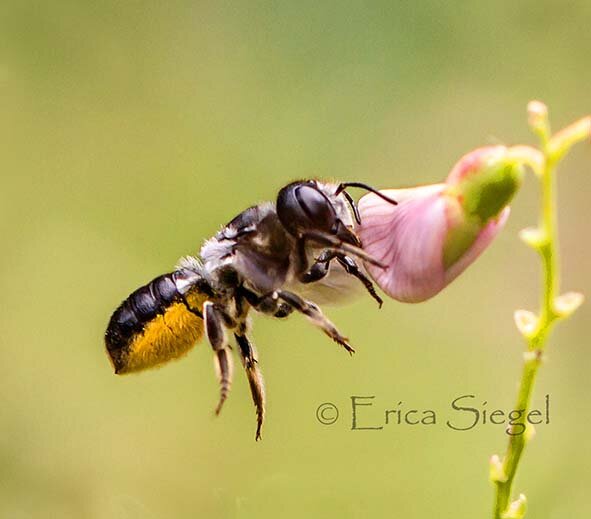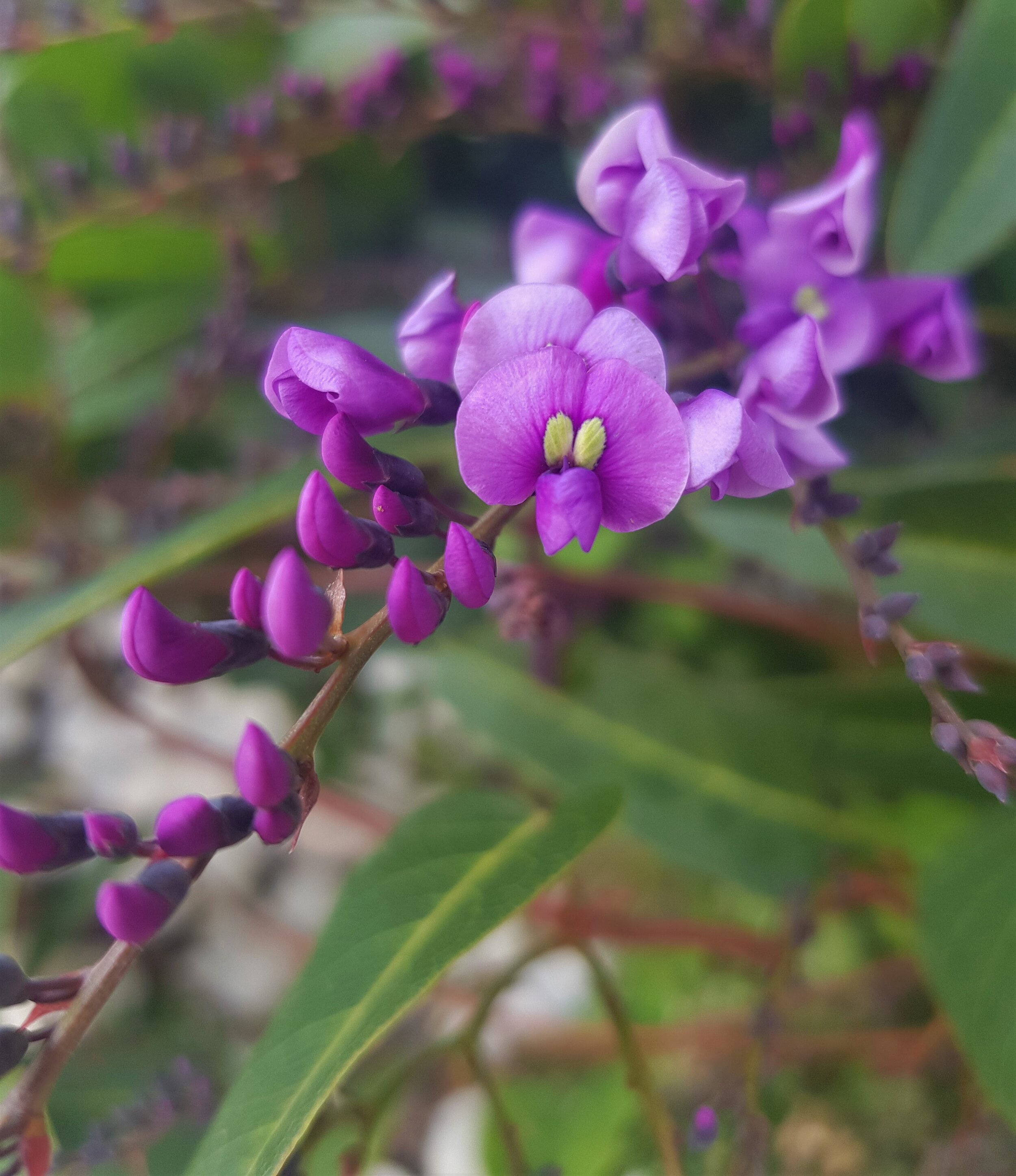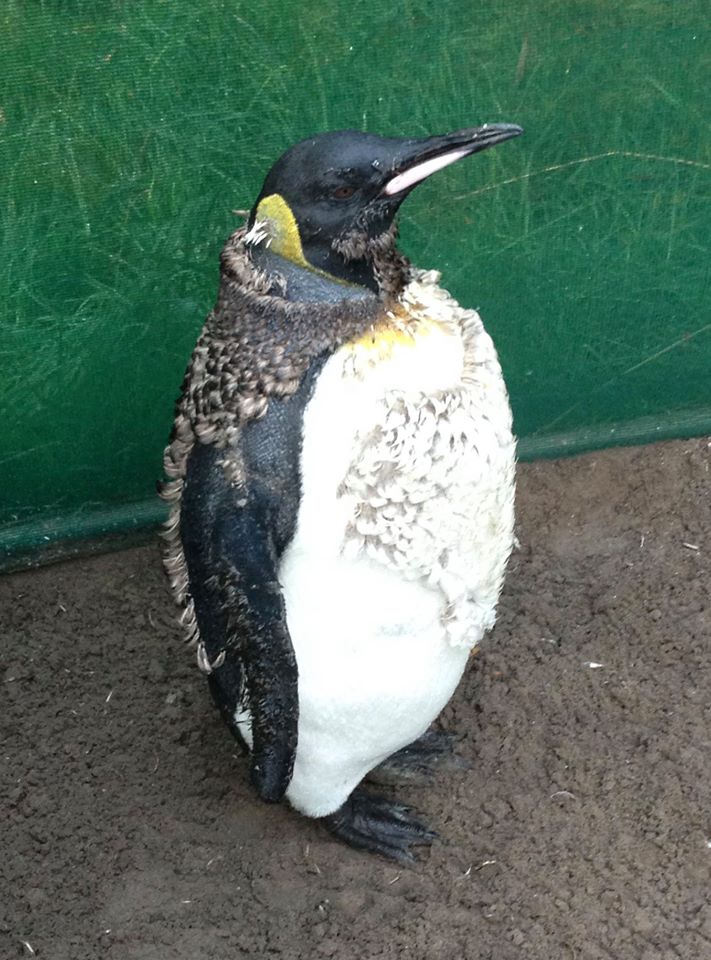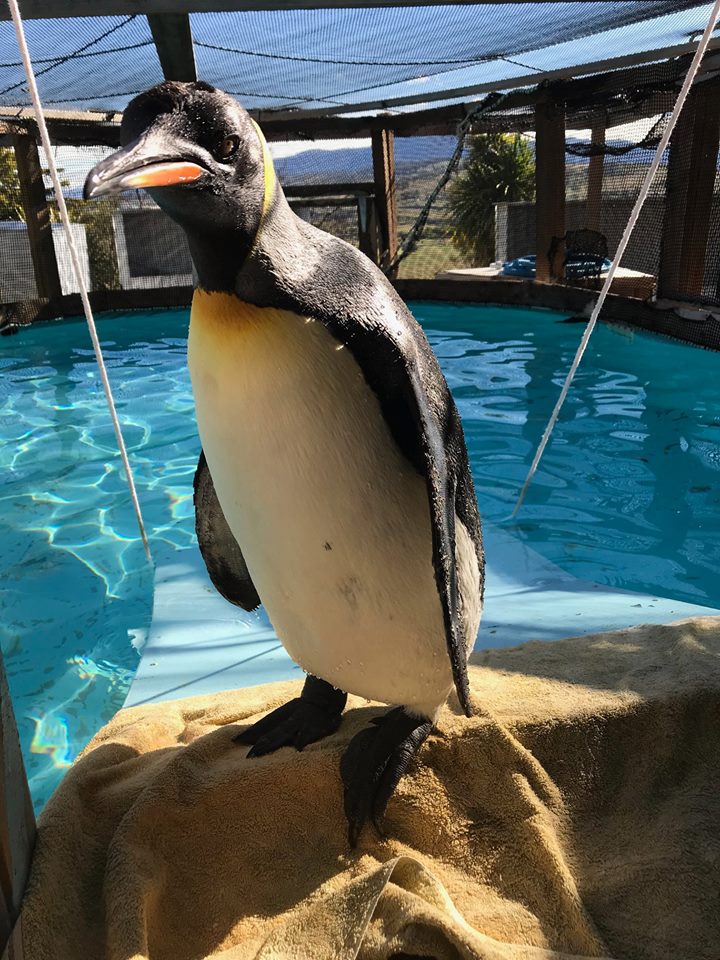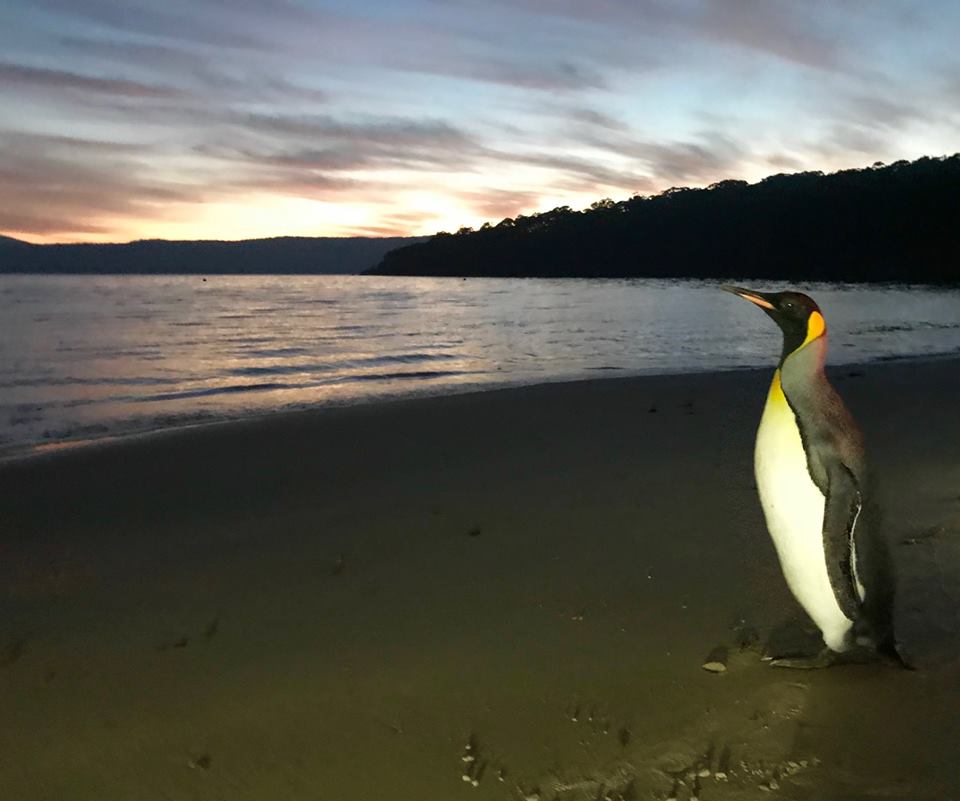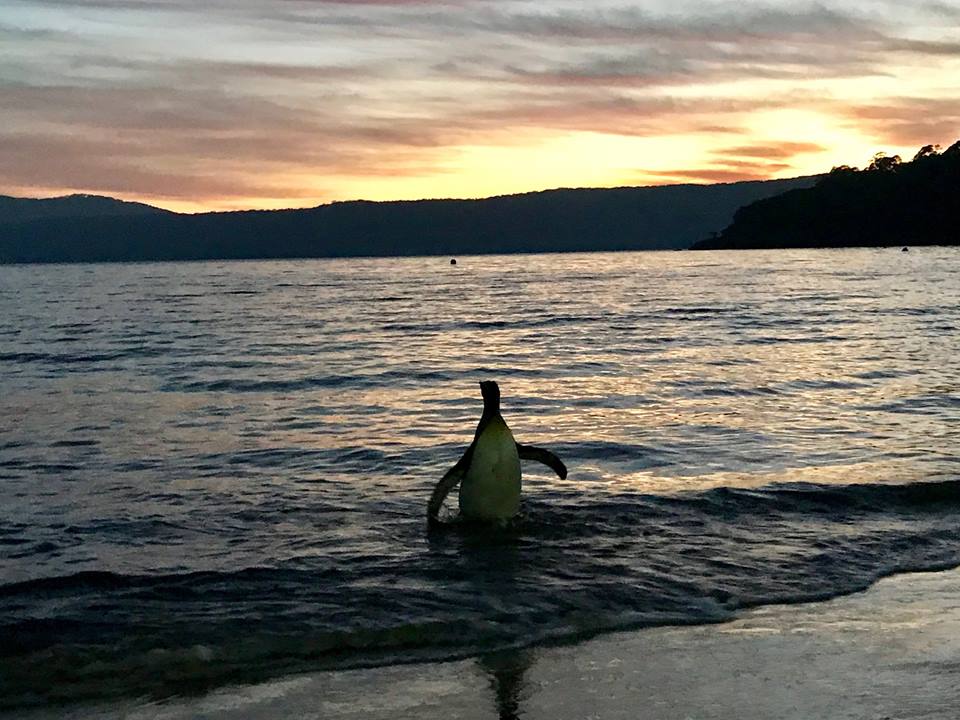Tasmania is home to 383 species of birds, and most of these are widespread and common. You can find 13 native species of birds of prey in Tasmania, which include the Wedge-tailed Eagle, the Tasmanian masked owl and the Southern Boobook. Read on to discover the list of beautiful raptors that call Tasmania home.
10 Best Places to see Platypus in Tasmania
Species Spotlight: Tasmanian Short-beaked Echidna
The Complete Guide to Marsupials in Tasmania and Why They are Important
Written for Bonorong by Pink Lemonade Social
Tasmania is home to a range of unique animals, including some endemic marsupials (native and restricted) not found anywhere else in Australia. This includes the Tasmanian devil, spotted-tailed quoll, and eastern quoll, the three largest living marsupial predators in the world. Due to its island position, fewer imported predators, and a comparatively large quantity of intact habitat, Tasmania is a stronghold for many species that have fallen extinct or are on the verge of extinction on the mainland of Australia. A large proportion of Tasmania's mammal population are marsupials, more commonly known as pouched mammals. Read on to discover the types of marsupials only found in Tasmania and why their conservation is important.
What is a Marsupial?
A marsupial is a mammal that has a pouch on its belly to carry its young and is found predominantly in Australia and New Guinea. This is different from placental mammals like humans, who have an abdominal cavity where the fetus develops until it is time for birth. The name "marsupial" coming from the Latin word "marsupium", means "pouch". Astonishingly, marsupials give birth to fingernail-sized babies that spend their entire lives in their mother's pouch before they are mature enough to leave the pouch and explore the world on their own feet.
What Are the Different Types of Marsupials Found in Tasmania?
Marsupials are a type of mammal that are commonly found in Tasmania that delight many locals and tourists. There are many types of marsupials in Tasmania, but the most common ones are kangaroos and wallabies, possums and Tasmanian devils.
Kangaroos and Wallabies in Tasmania (Macropods)
Kangaroos and wallabies are members of the macropod family (from the Greek meaning "large-footed"). Members of this group of marsupials are distinguished by their large hind legs and typically move by hopping. While there are over 50 macropod species found in Australia, there are five commonly found in Tasmania, including the well-known wallabies and kangaroos, as well as the lesser-known bettongs and potoroos. These include:
· Forester Kangaroo (Macropus giganteus)
· Bennetts (red-necked) Wallaby (Notamacropus rufogriseus)
· Tasmanian Pademelon (Thylogale billardierii)
· Tasmanian Bettong (Bettongia gaimardi) (also known as the Southern or Eastern Bettong)
· Long-nosed Potoroo (Potorous tridactylus)
All macropods have a pouch with four teats that opens forwards. When a new baby is born, it enters the pouch and attaches itself to a different teat; usually the one opposite the one previously suckled. Again, the mother will mate soon after the birth. As the cycle progresses, a female may be suckling a pouch young, whilst having a larger young outside the pouch suckling from a different teat, and then at the same time carrying an undeveloped embryo.
Forester Kangaroo
The Forester Kangaroo is Tasmania's largest marsupial and the world's second-largest, with males reaching 60kg and standing 2m tall! The colour ranges from pale brownish-grey to grey. They have relatively large ears and, unlike the other two species, have hair between the nostrils and on the upper lip. When alarmed, they frequently make clucking sounds between themselves and cough with a guttural sound. The species is widespread on mainland Australia, where it is known as the Eastern Grey Kangaroo. It is only found in north-eastern Tasmania and a few isolated areas in central Tasmania. They have also been introduced to the National Parks of Maria Island and Narawntapu, where open grassland clearings are their preferred habitat. You can see and feed Forester Kangaroos at Bonorong Wildlife Sanctuary and view all the animals at Bonorong here.
Bennetts Wallaby
One of Tasmania's most common native animals is the Bennetts Wallaby. The species is also common in southeast Australia, where it is known as the Red-necked Wallaby. Most of our national parks have a high probability of encountering these animals during their visit. Males stand roughly 1.5 m tall and can weigh more than 20 kg and are commonly referred to as Kangaroos in Tasmania. Their black nose and paws, as well as a white stripe on the upper lip, distinguish them from the Pademelon and Forester Kangaroos.
Some Bennett's wallabies (Macropus rufogriseus) have a rare genetic mutation that gives them white fur, and they are commonly known as white wallabies. Bruny Island is home to a population of white wallabies, some of which are albino with white coats and pink eyes, ears, and noses, while others only have a white coat (known as leucism).
While there are no wallabies at Bonorong, our Wildlife Hospital treats hundreds of wallabies every year.
Tasmanian Pademelon
Pademelon is an unusual name with Aboriginal origins. The rufous wallaby is another name for this species. The Pademelon is a stocky macropod with a short tail and legs to help it move through dense vegetation. It has a dark-brown to grey-brown upper body and a red-brown belly. Males, which are significantly larger than females, have a muscular chest and forearms and can weigh up to 12kg and measure 1-1.2m in total length, including the tail. Females weigh an average of 3.9kg. Pademelons are nocturnal and solitary creatures that spend the day in dense vegetation. The preferred habitat is rainforest and wet forest. This type of habitat is especially desirable near cleared areas where feeding can occur. After dusk, the animals migrate to open areas to feed, but they rarely venture more than 100 metres from the safety of the forest edge. The species is plentiful and widespread throughout Tasmania and is common in many of the state's national parks. On the mainland, it is extinct.
Long-Nosed Potoroo
Potoroos can weigh up to 1.3 kg and have fur that varies in colour; grey on the east coast to red-brown on the west coast, with paler fur on the belly. The majority of individuals have a white tip to their tail. The Potoroo is also distinguished by its darker colouring and a larger, more pointed nose. With populations on Flinders and Bruny Islands, the species is widespread across Tasmania. Potoroos, however, are harmed by the clearing of bush areas, as new growth forests are less suitable for their needs.
Tasmanian Bettong
The Bettong can only be found in Tasmania's eastern half. in the early twentieth century it became extinct on the mainland due to fox predation and large-scale land clearance. Bettongs can weigh up to 2 kg and are brown-grey on top and white on the bottom. The bettong's tail is as long as its head and body, whereas the potoroo's tail is significantly shorter. Bettongs prefer open, dry eucalypt forests and grassy woodlands. They are nocturnal, spending the day in a domed, grass-camouflaged nest. Using its prehensile tail, the bettong gathers suitable nesting material and transports it to the nest site. In contrast to the potoroo, which does not travel far when feeding, the bettong can travel up to 1.5 km to feed; quite a journey for an animal of this size! If you book a Bonorong Night Tour, you will get to see these cute creatures venture out for dinner.
Possums in Tasmania
Interestingly, Possums in Australia were named after their supposed resemblance to opossums in South America. In fact, apart from being arboreal (tree-dwelling) marsupials, the two groups are unrelated. Indeed, some locals still refer to these animals as opossums, and Opossum Bay, a Hobart suburb, gets its name from the misnomer. Tasmania is home to a range of possums, some commonly seen, others more elusive. While sugar gliders are considered, they were introduced into Tasmania and are not endemic to the region. You can see sugar gliders up close on one of our night tours. Possums in Tasmania include:
· Common ringtail possum (Pseudocheirus peregrinus)
· Brushtail possum (Trichosurus vulpecula)
· Eastern pygmy possum (Cercartetus nanus)
· Little pygmy possum (Cercartetus lepidus)
· Sugar glider (Petaurus breviceps) (introduced)
Brushtail Possum
The Brushtail Possum is one of Australia's most well-known marsupials, as well as the most common possum species and the largest tree-dwelling marsupial herbivore. It has the face of a domestic cat, long oval ears, a pink nose, and a bushy black tail. The Tasmanian Brushtail comes in three different colours: silver grey, black, and gold. Possums with very dark fur live in denser, wetter forests than grey Possums. Some possums that are golden in colour are the result of a genetic mutation, and most do not survive in the wild for long due to their visibility to predators. If you visit Bonorong on a night tour, you will see some wild brushtails that follow along as our animals get fed, hoping to get some fruit and vegies themselves!
Common Ringtail Possum
The common Ringtail Possum, like all Ringtail Possums, has a strong prehensile tail that acts as a fifth limb and is tightly coiled when not in use. The light fur covering its tail, as well as the white tail tip, distinguish it from the brushtail. The common ringtail can be found along the entire eastern seaboard of mainland Australia, as well as in the southwest corner of Western Australia. It is found throughout Tasmania in a variety of vegetation types, particularly eucalypt forests and areas of tall, dense tea-tree. You can meet a ringtail possum up close in one of our friendly Animal Encounters.
Little Pygmy Possum/Tasmanian pygmy possum
Adorable and appropriately named, the Little Pygmy Possum weighs only seven grams and measures only 5-6.5 cm in length. It is, in fact, the tiniest of all possums. Except for rainforest, it is mostly found in Tasmania's drier forests and heathlands in the state's east. While rarely seen, you can view a cute Little Pygmy Possum here; she was rescued by a resident calling our 24-hour wildlife rescue hotline. Our vet team performed a full health examination on her while she was sedated, and luckily, she only sustained minor injuries and was able to recover completely before being released back into the wild.
Eastern Pygmy Possum
IMAGE CREDIT: parks.tas.gov.au
Because of the harsh winters in Tasmania, both the Eastern Pygmy Possum and its close relative, the Little Pygmy Possum, have developed a few unique adaptations. During cold spells, both species go into torpor. Torpor is a state in which an animal reduces its energy expenditure by slowing its metabolism and decreasing physical activity, similar to hibernation, allowing them to survive periods of reduced food availability. Its body temperature can drop to levels comparable to those of its surroundings. Torpidity, unlike true hibernation, usually lasts only a few days. The Eastern Pygmy Possum can be found in the wetter forests of the state's western half.
Carnivorous Marsupials in Tasmania and Bandicoots
Some of the most famous animals and marsupials in Tasmania are the carnivorous kinds and are the ones most tourists are mesmerised by. While bandicoots come from the Peramelidae family, the meat-eating marsupials come from the Dasyuridae family. Tasmania’s carnivorous marsupials and bandicoots include:
· Tasmanian devil (Sarcophilus harrisii)
· Spotted-tailed quoll (Dasyurus maculatus)
· Eastern quoll (Dasyurus viverrinus)
· Tasmanian dusky antechinus (Antechinus swainsonii)
· Tasman Peninsula dusky antechinus (Antechinus vandycki)
· Swamp antechinus (Antechinus minimus)
· White-footed dunnart (Sminthopsis leucopus)
· Eastern barred bandicoot (Perameles gunnii)
· Southern brown bandicoot (Isoodon obesulus)
· Thylacine (Tasmanian tiger) (Thylacinus cynocephalus)
A visit to Bonorong will allow you to see Tasmanian Devils, Spotted-tailed quolls and Eastern quolls, or go one step closer by feeding them yourself on a Night Tour!
Tasmanian Devils
The Tasmanian Devil can’t be confused with any other marsupial or animal because they’re so unique! With their spine-chilling screeches, black colour, red ears, and rumoured bad temper, which earned it the name "The Devil" among early European settlers, they are certainly one-of-a-kind. Although Tasmanian Devils are only the size of a small dog, they can sound and look incredibly fierce but are one of the most misunderstood creatures on the planet.
Tasmanian Devils are the world's largest surviving carnivorous marsupial (the Thylacine being extinct), with a thick-set, squat build, a relatively large, broad head, and a short, thick tail. Their fur is mostly or entirely black, with white markings on the rump and chest. Body size also varies greatly depending on diet and environment. Adult male devils are typically larger than adult female devils (large males can weigh up to 12kg and stand 30 cm tall at the shoulder).
Devils once roamed mainland Australia, but they became extinct 3000 years ago, before European settlement.
Today, the Devil is regarded as a Tasmanian icon. However, this has not always been the case; once considered a nuisance by early European settlers, and they were trapped and poisoned for more than a century. They became extremely rare and appeared to be on the verge of extinction. However, the population gradually increased after they were legally protected in June 1941. They were especially common in Tasmania's northern, eastern, and central forests, woodlands, and agricultural areas. Their numbers have decreased since the discovery of Devil Facial Tumour Disease (DFTD) in 1996. DFTD, which is now wreaking havoc on the Tasmanian Devil population, was first discovered in the northeast of Tasmania but has recently spread to other parts of the state and is a fatal condition characterised by cancers around the mouth and head.
Tasmanian devils live on the ground and are primarily a scavenger, eating whatever is available. Its powerful jaws and teeth allow it to completely devour its prey, bones and fur included. By cleaning up carcasses, devils keep the bush and farmland clean. Tasmanian devils are primarily nocturnal and spend the day hiding in a den or dense bush before becoming active at night. They travel long distances (up to 16 km) along well-defined trails in search of food. The famous gape or yawn of the devil, which appears to be aggressive, is actually performed out of fear, stress (happy and unhappy stress) and uncertainty rather than aggression. When stressed, devils emit a strong odour but don’t when calm and relaxed. Their natural smell is similar to that of a wet dog. The Tasmanian Devil's status was officially upgraded to 'endangered' in May 2008 under Tasmania's Threatened Species Protection Act 1995. You can read an interesting story about A Devil Named Clownfish here.
Eastern Quoll
Eastern Quolls, also referred to by some as “native cats”, are roughly the size of a small domestic cat, measuring 60 cm in length and weighing 1.3 kg on average (females are slightly smaller). They have thick, soft fur that is fawn, brown, or black in colour. Except for their bushy tail, which may have a white tip, their body is covered in small white spots. The eastern quoll is slightly larger than the related Spotted-tail Quoll and has a pointed muzzle. It has two colour phases: fawn and black, with white spots on the body but not on the tail. Eastern quolls were once found on mainland Australia, with the last sighting in the early 1960s in the Sydney suburb of Vaucluse. They are now thought to be extinct on the mainland, but the species is thankfully widespread and locally common in Tasmania yet are still listed as endangered. Bonorong is also involved in the Tasmanian Quoll Conservation Program and we breed eastern quolls as part of this program every year. The eastern quoll is mostly nocturnal and solitary, hunting and scavenging for insects and grubs. As well as seeing them up close at Bonorong, you can see Eastern Quolls at South Bruny National Park and Mount Field National Park.
Spotted-Tail Quoll
The Spotted-tailed Quoll (also known as the Tiger Cat) is the world's second-largest surviving carnivorous marsupial. Spotted-tailed Quolls range in colour from reddish-brown to dark chocolate brown, with white spots on their bodies and tails (unlike eastern quolls, which do not have spots on the tail). Males can grow to be 130 cm long and 4 kg in weight, making them much larger than the Eastern Quoll (males are noticeably larger than females). The Spotted-tailed Quoll can also be found on the east coast of mainland Australia, but it is uncommon, unlike in Tasmania, where it thrives in cool temperate rainforest, wet sclerophyll forest, and coastal scrub along the state's north and west coasts. In Tasmania it is rare to see a Spooted-tail quoll and the species is listed as Vulnerable. Since the early 1900s, they have been extinct on King and Flinders Islands. They are mostly nocturnal and solitary, though the species does forage and bask during the day. Spotted-tailed Quolls spend one-tenth of their time moving around on logs or in trees above the forest floor. It is an expert hunter who, like the eastern quoll, kills its prey by biting on or behind the head. Rats, gliding possums, small or injured wallabies, reptiles, and insects are among the prey items taken by the spotted-tailed quoll. As well as Bonorong, you can see spotted-tail quolls at the Central Plateau Conservation Area, Narawntapu National Park and Arthur-Pieman Conservation Area.
Thylacine (Tasmanian Tiger)
Image Credit: Samuel François-Steininger/Composite Films/National Film and Sound Archive
The Thylacine is one of Australia’s and the world's most legendary animals. Despite its fame, it is one of Tasmania's least understood native animals. It perplexed European settlers, who feared it and killed it whenever they could. The animal was on the verge of extinction after only a century of white settlement. The Thylacine had the appearance of a large, long dog with stripes, a heavy stiff tail, and a large head. The scientific name, Thylacinus cynocephalus, means a pouched dog with a wolf's head. The short, soft fur was brown with 13 - 20 dark brown-black stripes running from the base of the tail to almost the shoulders. Thylacines were usually silent, but when they were nervous or excited, they let out a series of husky, coughing barks. When they were hunting, they made a distinctive terrier-like double yap that was repeated every few seconds. You can see and learn more about Tasmanian Devils at the Tasmanian Museum and Art Gallery.
Eastern Barred Bandicoot
The endearing Eastern-barred Bandicoot is a small (640 g) marsupial with a slender, elongated head that tapers to a pink nose and a well-whiskered muzzle. It has big, protruding ears. Its soft fur is greyish brown, with the characteristic pale bars or stripes across the hindquarters that distinguish it from the brown bandicoot, which lacks such stripes. They have a short, thin tail with white fur on the belly. The Eastern-barred Bandicoot is classified as threatened because the species is on the verge of extinction. In South Australia, the eastern barred bandicoot has been declared extinct and 'critically endangered' in Victoria, where the population has been reduced to 200 individuals.
Wombats in Tasmania
The Wombat is the largest burrowing mammal, and interestingly, the Koala is its closest relative. The wombat is one of Australia's most endearing native animals, with its short tail and legs, characteristic waddle, and 'cuddly' appearance. Once found throughout southeastern Australia, the Bare-nosed wombat, also known as the common wombat is now restricted further south, owing in part to European settlement. It is found in Tasmania, eastern New South Wales, and eastern Victoria, with isolated populations in southeastern South Australia and southwest Victoria. It is a large, well-built animal with a squat, round, bear-like body, small ears and eyes, and a large naked nose. Its thick, coarse fur ranges in colour from sandy brown to grey and black, with flecks of fawn thrown in for good measure. Although not as large or bulky as those found on the mainland, the Tasmanian Wombat measure 85 cm in length and weighs 20 kg on average, with the Flinders Island Wombat even smaller, measuring only 75 cm in length. Wombats are common in Tasmania but can be more often seen in southern Tasmania, the Tasman Peninsula, Cradle Mountain or up close at Bonorong in a regular visit or via our Wombat Animal Encounter, our Feeding Frenzy Tour or our Night Tour. If you love wombats, read our guide to Everything You Need to Know about Wombats.
Why are Tasmanian marsupials important?
Tasmanian marsupials are an important part of the Australian ecosystem. They are threatened and endangered due to a variety of factors, including climate change, habitat destruction, predation by invasive species and human interference.
The Tasmanian devil is the most well-known marsupial in Australia. It is one of the largest carnivores in the country, and it plays an important role in keeping other populations of animals under control.
Marsupials are some of the most common, endangered and cherished animals in Tasmania, and if you find injured or orphaned marsupials or wildlife, remember to call the Bonorong Wildlife Rescue Service, which operates 24/7 on 0447 264 625.
We're Looking for a Marketing Intern!
There’s a lot going on at Bonorong Wildlife Sanctuary and it means we need some extra hands on deck! We are currently looking for an intern to join our marketing team to learn and work across our digital marketing array and strengthen our brand with all the new, exciting things happening!
THE ROLE
We are looking for a creative, enthusiastic, friendly, energetic, passionate and adaptable intern to join our fast-paced team in order to gain experience in the industry. We are seeking an individual with a strong connection and interest in wildlife and the environment. In this role you will be working across and learn about the following:
- Blog and eDM copywriting (~60%)
- Organic social media (sourcing content, copywriting for different platforms, hashtag strategies, etc.) (~20%)
- Paid social media (understanding analytics, campaign set ups etc.) (~10%)
- General marketing/content/social admin tasks & reporting (~10%)
In this role you will also learn and be responsible for some of the following:
Sourcing and capturing imagery/videos
Cataloguing Image Library for easy access
Copywriting posts and using relevant hashtags
Content creation
Research & competitor analysis
Brainstorming ideas for PR and social campaigns
Assisting in social reporting and analysis
Website SEO improvements
This is a part-WFH position, so good internet is pivotal. The role would see you working from home one day a week, as well as working out of Bonorong one day a week. You will be required to bring your own laptop.
You will work under our Marketing Specialist who has over 15 years experience in Marketing & Digital Marketing, and will work with you to learn, upskill and develop your strengths in marketing. Please note this is an unpaid intern role.
THE CANDIDATE
You will have a positive outlook, passion for what we do, great work ethic, excellent communication skills, good time management skills, flexibility, client focused and a good sense of humour.
You don’t shy away from diving in head first doing the hard-work. We will work with you to tailor your workload, to both work across areas and tasks you are interested in, as well as where we can best help upskill you and teach you things that are going to help you excel in your career – this is a two-way relationship after all.
To be successful in this position you will:
- Have keen creative eye and understand what makes for an interesting social feed to engage audiences
- Be detail oriented, have good writing skills and be able to work autonomously
- Be good communicator with a positive can-do attitude and excellent work ethic
- Have eagerness to learn and grow within the field of digital marketing
- Be available 1-2 days per week for a minimum period of 3 months
Previous hands-on Social Media, Public Relations, Advertising, Copywriting or Digital Marketing experience is highly regarded but not essential. Applicants currently completing a Marketing, Communications, Journalism or PR Degree’s are encouraged to apply.
HOW TO APPLY
If you believe you have what we are looking for and think you would be perfect for our team, email us with your CV and cover letter – we also appreciate a good GIF or meme, so if you have one that supports your application and shows us your personality, send it on through!
Please send your application to socials@bonorong.com.au
TIMINGS & NEXT STEPS
The position will be up for roughly 2-3 weeks, before we narrow it down to 4-6 applicants who then we’d love to have a chat to. Please note, next steps may be a small writing task – as writing is paramount to the work, and will be roughly 60-70% of the work over the first few months.
Species Spotlight: Short-tailed Shearwater
We're Hiring! Teaching Support Person - Bonorong Wildlife Sanctuary
Teaching Support Person
Background:
Bonorong Wildlife Sanctuary has been running nationally accredited training courses in Animal Studies for 10 years. In 2022 we have launched our new courses for Certificate II in Animal Care and Certificate III in Wildlife and Exhibited Animals with the teaching period to commence at the end of July 2022. The Bonorong courses are an amazing mix for the students of practical theory and placement days all undertaken in a vibrant operating Wildlife Sanctuary. The feedback from courses over the years has been incredibly positive, this being a course that is enjoyed by students. These competitive entry courses are popular and draws a diverse range of applications.
About the role:
Providing a much-needed addition to a small teaching team the Bonorong Wildlife Sanctuary is seeking to recruit an individual who can provide:
Literacy and numeracy support for the students of the Certificate II and Certificate III courses under the direction of the teacher;
Can provide backup teaching when and if required; and
Support activities for the teaching team as needed.
Responsibilities:
* Assist students on an individual or group basis in specific learning areas so they can complete set work.
* Assist with communication between teachers and students, particularly the interpretation of instructions and provide support to students.
* Participate in the monitoring and evaluation of individual student involvement and achievement.
* Assist with the preparation and modification of classroom materials and produce basic curriculum support resources as required.
* Assist in the documentation of students' individual learning plans if needed
* Assist with the delivery of course content as and when required
* Assist with the management of student’s placements days as required
Selection criteria:
SC1 - Experience in providing support in a teaching environment
SC2 - Capacity to undertake support tasks
SC3 - Capability to deliver teaching within topic areas relevant to animal and wildlife courses
SC4 - Effective communication and presentation skills
SC5 - Able to contribute to an energetic team inclusive of students and the workplace
SC6 - Capacity to work sensitively with students including the ability to work with students with emotional, physical or intellectual disabilities.
Essential Requirements
Completion of TAE Cert IV Training and Assessment or capacity to complete prior to Sep 2022.
Position Details
The position would be for between 8 hours to 20 hours per week. Final hours will depend on the number of students and courses on offer post closure of applications and selection of students.
The position will require on site attendance at Bonorong Wildlife Sanctuary in Brighton, Tasmania.
Thank you for your interest
We look forward to continuing the conversation with applicants who feel that they have the skills and capacity to support the work that we do, and make a positive contribution to the learning outcomes for the students undertaking the nationally accredited courses at Bonorong. We offer a stimulating and fulfilling workplace in a busy positive impact, social enterprise.
Please email your resume and a cover letter detailing why you think you’d be a good fit for this role to: study@bonorong.com.au
Please do not call or show up in person to apply for or enquire about this position!! Applications and questions are only accepted via the email above.
Due to the amount of applications we receive for any position we advertise, you will only be contacted if you are successful in moving to the next round.
Applications close on Sunday 19th June 2022.
We're Hiring! Maintenance / Handy person
Expression of Interest - Maintenance / Handy person
There’s a lot going on at Bonorong Wildlife Sanctuary, and we are currently seeking expressions of interest from experienced Maintenance / Handy persons. You will work in unison with our with our extremely busy resident builder and also have the ability to perform tasks independently. Hours will be negotiable for the right candidate.
You
Manual licence & own transport essential
Carpentry experience is highly regarded
Experience in other trades a bonus
Must own a variety of battery-operated tools
Be physically fit and able
Ability to adapt, be creative, flexible, and work without plans
Us
Social enterprise with a focus on animal welfare and the environment
Rapidly growing business with awesome customers
Love providing amazing, educational experiences
Comfy uniforms
Great work environment (if we do say so ourselves)
If you’re not afraid of a good, hard day’s work and are experienced in any of the trades, we would be keen to hear from you.
Email your resume and a cover letter detailing why you think you’d be a good fit for this role to: petra@bonorong.com.au
Please do not call or show up in person to apply for or enquire about this position!! Applications and questions are only accepted via the email above.
Due to the amount of applications we receive for any position we advertise, you will only be contacted if you are successful in moving to the next round.
Applications close June 19th.
Everything You Need to Know About Wombats
20 Amazing Facts about the Tasmanian Devil!
A Devil Named Clownfish
On the 25th of June our Wildlife Rescue Service received a call from the Save the Tasmanian Devil Program regarding a juvenile devil with a large injury to her front right leg. “Clownfish”, as she had affectionately become known as, was found while doing routine trapping on Maria Island, which is done to monitor the health of the wild devil population.
The Save the Tasmanian Devil Program (STDP) is the official government response to battle the threat of extinction that our endangered Tasmanian devils face in the plight of Devil Facial Tumour Disease (DFTD). Established in 2003, the program saw the collaboration of experts from all over Australia and is now a state-wide team made up of dedicated staff and volunteers who work tirelessly to secure the population of devils for many generations to come.
Bonorong’s Wildlife Rescue Team arranged transport to get Clownfish down to the Sanctuary for treatment and she was transferred to Bonorong’s Wildlife Hospital to be assessed and treated by our IFAW-funded wildlife vets. It was still unclear at this stage how the injury happened or what the cause was.
Our experienced vet team got to work as soon as Clownfish arrived at the Sanctuary. Placing her under general anaesthetic, the team gave her a thorough health check and was able to take the time to closely examine her wound. It became clear the wound was already a few days old which meant a considerable amount of necrotic skin that needed to be removed. This means skin and flesh that had died which must then be removed to enable healing and prevent infection. Once the skin was removed the wound was then far too large to stitch up, and there was grave concern that Clownfish may lose her leg.
Tasmanian Devils are endangered, with only an estimated 25,000 individuals left in the wild. Bonorong’s IFAW funded vets decided to take the chance on trying to save Clownfish’s leg which meant she would have the best chance of returning to the wild and doing her part to help secure future generations!
Tasmanian devils are only found on our little island state and are the largest carnivorous marsupial in the world. There was believed to be around 140,000 devils in the wild before the Tasmanian Devil Facial Tumour Disease became prominent in the 1990’s, completely decimating the wild populations.
Clownfish’s wound required bandaging and constant monitoring to ensure it remained clean and dry. Multiple times over the course of a week, the young Tasmanian devil was brought into the Wildlife Hospital to have her bandage changed and her wound cleaned. There was a complication though as her skin became irritated, her devil’s skin not suited to the material of bandages. Removing the dressings, the vet team made the decision to treat her wound as an open wound which means with no covered dressings.
This process continued and weeks soon turned into months and something very incredible happened, Clownfish began to grow! When she first arrived at Bonorong, she was only 2kg but over her time in rehabilitation she had put on just a little over a kilo and was continuing to grow each day. An adult Tasmanian Devil can weigh up to 8kgs, so while Clownfish still had a way to go before becoming a fully-grown devil, she was well on her way.
Tasmanian Devils are a far cry from their cartoon counterparts, they’re not loud and destructive – very much the opposite! By nature, devils are shy and elusive, which made it difficult for the Bonorong team to monitor how Clownfish was using her injured leg. A night vision trail camera was placed in her enclosure to get a better idea of how she was moving with her injury and to everyone’s delight, the footage showed Clownfish walking, running, and climbing the structures in her enclosure with ease.
Each time the vet team would check up on Clownfish’s injury, her wound was measured to check the healing progress. Cell by cell, millimeter by millimeter the wound began to close over. Two months from the day Clownfish had arrived at Bonorong Wildlife Sanctuary, the wound on her front right leg was declared completely closed and she was ready to return to the wild again! The Save the Tasmania Devil Program was called to tell them the great news and for them to help arrange her release. After being safely transported to her release site the transport carrier door was opened and without hesitation, Clownfish dashed out and ran back into the bush without so much as looking back.
Good luck out there Clownfish!!
P.S. - Each year the Save the Tasmanian Devil Program chooses a theme for naming the new devils that they catch that haven’t been trapped before. This year's theme on Maria Island was “types of fish”, so that is how Clownfish got her name!
One Lucky Duck
On the wall of the Bonorong Wildlife Rescue office, there runs a tally for calls made to our 24-hour Rescue Service about a duck which has affectionately become known as Stickduck.
One look and you’ll understand where this duck got her moniker from. A unique injury made her stand out from the rest of the flock – She has a roughly 40cm stick impaled through the side of her body!
This Pacific black duck, a native duck species to Australia and a common sight in Tasmania urban areas, had fast become a celebrity around Hobart! The first recorded call to our 24-hour Wildlife Rescue Service for Stickduck was made back in February 2021 and from then, the team had been inundated with calls in regard to this impaled duck.
She was often sighted in many areas around greater Hobart, showing that her injury hadn’t inhibited her flight or ability to swim! Many people reported seeing her socialising with other ducks and carrying out all the normal duties of a duck day, albeit, with a stick in her back!
Over the course of the 10 months that Stickduck was at large, many attempts were made by staff and volunteer Bonorong Wildlife Rescuers to catch her, but despite the large protruding stick that one would think might slow her down, she remained elusive and agile, escaping every attempt made to capture her.
However, on Friday 8th October, her escape streak came to an end when she landed in the backyard of a house and thanks to the quick thinking of the homeowner, she was captured and taken to the team at Eastern Shore Vet for treatment. Once the team over there deemed her to be stable, they organised transport for her to be brought over to our Wildlife Hospital for some expert treatment.
After safely arriving at our Wildlife Hospital, our ifaw funded vet team anesthetised Stickduck and undertook the daunting task of removing the stick wedged through her body. The vet assessment included the relieving fact that the stick had narrowly missed major organs and veins – a lucky duck indeed!
Miraculously, the tissue around the wound had also healed cleanly and was free from any infection, making the removal of the now infamous stick an easier task than at first anticipated. It became as simple as just pulling it out!
Dr Luke had the satisfying task and as you can see, he was delighted with the result!
How a stick became lodged within this duck is completely unknown and still in debate, but the important thing is that the stick has been removed safely. It’s now displayed in a place of honour on the Wildlife Clinic wall.
With the stick removed and the wound clean, the wildlife vet team prescribed Stickduck with one week of rest to ensure no complications arose. Once the week was up and the vet team could see she moved and swam well, she was given the all clear to be released back into the wild.
On the much-anticipated release day, the Bonorong team gave Stickduck a big farewell as she left the Sanctuary to head off to her new stick-free life. She travelled safely in her pet pack to the release site, a place she was frequently seen. As the car pulled up, she began to get restless and call-out knowing she was about to return home.
At the site, two Wildlife Rescuers who had become well acquainted with Stickduck over the past 10 months were waiting to do the great honours of returning her to the wild. As they walked closer to the water, they recounted all the times they had gone out to try and capture the elusive duck and how it always ended with failure. It was great closure for them to see the happy ending of Stickduck’s journey and how their dedication directly played a role in her rehabilitation.
With the pet pack set down by the water and Stickduck’s fellow ducks eagerly looking on, the two volunteer Wildlife Rescuers opened the pet pack slowly, when suddenly – a loud flap of wings – and Stickduck was out and running towards the water! As she jumped in without a moment’s hesitation, the Rescuers called after her with some stern advice ‘No more sticks!’ they cried.
We can only hope she took the feedback onboard..
This has been a massive win for wildlife, and we would like to thank all those involved in Stickduck’s rescue and release. We hope she lives a long and happy stick-free life.
We couldn’t do what we do without the help of ifaw
Ifaw (International Fund for Animal Welfare) have been supporters of Bonorong Wildlife Sanctuary for almost a decade. They share our same belief that ‘every animal matters’ and together, we bring that value into our Bonorong wildlife hospital – the only one of it’s kind in Tasmania. Ifaw had given the Sanctuary a number of donations at the beginning of our Wildlife Hospital journey once they heard what we were trying to achieve and these donations were crucial in the development and building of our Sanctuary’s dream.
In 2018 we achieved that dream, which took many years of hard work to come into fruition – we opened the doors to Bonorong’s Wildlife Hospital for the very first time! This momentous occasion sparked an ongoing sponsorship with ifaw that has helped us change the life of countless injured and orphaned animals for the better.
Our wildlife hospital staff work hard to provide treatment to all native critters that come through our gates and this couldn’t be achieved without the ongoing sponsorship of ifaw. Through this sponsorship, they fund the wages of our hospital staff to keep the doors to the clinic open 5 days per week. This is an incredible partnership and without their help the hospital would not even be able to operate at half of this capacity, with staff wages being one of the largest costs to keep the hospital going.
The unfortunate truth is that many of the injuries that we see inflicted upon these animals are caused by us as humans, so we believe that it is our full responsibility to ensure we do everything within our power to help these animals get back into the wild. This invaluable partnership with ifaw allows us to do exactly that and to continue our mission to provide the much-needed medical treatment and rehabilitation to the unique and wonderful species of animals that come into our dedicated vet team’s care.
As a celebration of World Veterinary Day and our continued partnership with ifaw, we made this video to thank & highlight all that we have achieved and continue to achieve with their help.
Thanks to our continued partnership with ifaw, we are excited to announce that over the next three years, their funding will allow the Bonorong Wildlife Hospital to be fully staffed five days a week.
Plastic isn't so fantastic
There is not a single place in our Earth’s oceans where plastic has not been found.
Photo thanks to Emma Nichols
Plastic production only really began taking off in the 1950’s (that’s only 70 years ago) and since then we have produced around 8 billion metric tonnes of plastic.
To put a visual concept to that, that’s roughly 1 billion African elephants worth - the largest of all land animals!
Does that seem like an inconceivable number of elephants? That’s because it is and it’s an inconceivable amount of plastic too!
Around 6.3 billion tonnes of the plastic produced has become waste, with around 90% of it never having been recycled.
Worldwide, we produce around 390 million tonnes of plastic each year, with over 10 million tonnes of it ending up in our oceans, having a devastating impact on our marine life.
Our animals on land aren’t safe either from irresponsible disposal of plastic and other waste items, often getting caught and trapped in rubbish.
So why is plastic so bad?
Well, first, we should probably understand what it actually is.
Plastic is typically made from polymers of high molecular mass, making it very malleable and easily moulded into a solid object. It is well suited for a number of different applications such as building and construction, various types of equipment, and a wide variety of packaging. It’s cheap to produce and conveniently lightweight.
And plastic isn’t all bad. The invention of plastic has helped to bring about better safety and hygiene standards, and even improved our comfort with all the conveniences that come along with it.
It was designed with the idea to replace packaging that was either unsuitable or hard to come by.
Plastic was made with the intention to last, which is the very crux of the issue – it lasts.
Plastic doesn’t break down into its base components easily, or at all in most cases, instead it breaks up into tiny microplastics, often only after several hundred years or from external environmental influences, such as sunlight and wave action.
So how does this AFFECT our wildlife?
Around 10 million tonnes of plastic debris find its way into our oceans each year, with roughly 80% of it coming from land sources such as rubbish tips, inadequate waste management, intentional and unintentional littering, and being washed down stormwater drains where it makes its way to the ocean.
This is not only catastrophic for marine life who often ingest and get tangled in this plastic debris, but it also has devastating effects on the environment with the risk of buoyant plastic litter transporting invasive species.
Smaller plastic waste and microplastic in our oceans are also particularly adept at absorbing chemicals in their surrounding environments, such as fuel and oil spills. Once absorbed they become a small concentrated source of these harmful toxins, and when swallowed by marine animals can leach into the bloodstream and result in death.
Why do animals eat plastic?
It smells like dinner!
Huh?
It’s true. New studies have begun to unravel the mystery as to why marine animals are consuming plastic.
Krill, the primary food source of many seabirds and other marine life, feed on algae.
When algae breaks down naturally it emits a strong sulphur scent, which marine life have learned to recognise as being a sure sign there’s food nearby. Floating plastic debris, it turns out, is the perfect platform for algae to thrive.
Once wildlife catches the scent, it turns on their foraging mode, making it difficult for them to differentiate between what is actually food and what is not – everything is fair game.
This, however, doesn’t rule out that an animal wouldn’t find plastic to look like an appealing meal on its own.
Some marine animals, such as certain species of turtles, will often mistake clear, plastic bags as jellyfish, and fish will often ingest microplastic as it resembles the small particles they would normally forage for.
Over 200 species of marine animals have been documented feeding on plastic, including whales, turtles, seals, fish, and especially seabirds. Australian scientists released a study showing that around 90% of seabirds have ingested plastic.
Some seabirds, like the Pacific Gull, will vomit up anything that they can’t digest; these are called boluses. Lillian Stewart, an Honours candidate at Adrift Lab, IMAS, has been studying plastic consumption in seabirds in the North of Tasmania, and has documented multiple Pacific gull boluses during her research, as seen in her photos below. In the first image you can see a floss pick and in the second a bottle cap. These items are ingested by the birds, and then once regurgitated, are reintroduced back into the environment. It is suspected that the birds are feeding at a local tip, highlighting the need to reduce our plastic consumption and to be more considerate of how we dispose of it.
What can you do?
Each year, globally, we double our plastic production and at the current rate by mid-century there will be more plastic waste in the oceans, pound for pound, than fish.
Plastic is hard to avoid in this modern world, but there are many small changes in our lives that we can make to help reduce our plastic consumption.
The first and easiest step is to try to reduce single-use plastic in our lives where possible and to ensure that we dispose of it responsibly.
A few options include:
Endeavouring to follow the 3 R's - reduce, reuse, and recycle.
Refusing plastic straws, disposable coffee cups, and bottled water and instead opt for reusable options.
Using your own reusable shopping bag.
Avoiding using plastic bags for fruit and vegetables and instead use paper bags or reusable produce bags.
Using alternatives to plastic food wraps such as beeswax wraps, reusable cling film , paper bags, lunch boxes.
Lining a rubbish bin with newspaper or forgoing a liner altogether and washing out as needed.
Buying bread from the local bakery and using a bread bag to avoid excess plastic packaging.
Take your reusable glass containers and purchase items in bulk from your local wholefoods store.
Swapping from liquid soap to bars.
Swapping your plastic toothbrush for a bamboo one.
Checking with your local council on their recycling guidelines to ensure you’re recycling effectively.
Plastic Free July Org. has some in-depth resources on where to start or if you're already a veteran at reducing waste at home then you can find some great ideas for your wider community or workplace.
Every small step counts towards a better future and if we all do our part then we can help turn the tide on plastic in our oceans.
https://www.lawnstarter.com/blog/statistics/plastic-statistics/
Tasmania Bees: Quit Pollen My Leg
Bee puns really sting..
Australian native bees come in a whole spectrum of colours and sizes.
Unlike the iconic (and introduced) European honeybee that most of us are familiar with, our native bees are mostly solitary and in some cases stingless!
While in Tasmania we have over 100 species of native bees, some common ones are Reed bees, Leafcutter bees, and Resin bees.
Reed bees are small and slender with shiny black bodies and are just under 8mm long. They often nest in dry twigs and fronds of plants.
Photo by Erica Seigel Wildlife Photography
Leafcutter bees are extraordinary! They cut small circles out of soft leaves and use it as nest building material – their favourite leaves to use are often the leaves of rose plants.
Photo by Erica Seigel Wildlife Photography
Resin bees come in many colours and sizes. There are some as big as 14mm long while there are others that are as small as 8mm. They nest in pre-existing holes in timber and stonework.
They get their name from collecting resin from eucalyptus trees, which they use to build dividing walls in their brood cells.
Photo by Erica Siegel Wildlife Photography
Native bees are expert pollinators with their messy feeding style. Once they visit a flower to collect pollen, they emerge covered in it! They can spread the pollen a lot further and with more ease, while honeybees have a neater method of carrying the pollen on their hind legs. This method is not as effective for our native flora and this is why native bees are integral to the survival of many Australian native plants.
Another iconic (and again, introduced) bee is the bumble bee! They were first discovered in Tasmania around 20 years ago. It is unknown how they were introduced but they very quickly established a population on our island state. Genetic testing of the bumble bees found in Tasmania shows that their population stemmed from two or more queen bees, suggesting that someone has imported them illegally for one reason or another.
There hasn’t been enough research done to pinpoint what effects bumble bees have on our native bee population but it is clear that they compete with our native bees and animals for territory and food.
One species in particular is a cause for concern – The endangered swift parrot. Bumble bees occupy hollows in trees and eat the nectar from flowering eucalyptus trees – two vital things for the survival and reproductive success of the swift parrot.
The bumble bee is also not an efficient pollinator, they often bite through a flower to get the nectar and bypass the pollen altogether.
What are some things I can do to encourage native bees into my garden?
Everyone knows that bees need flowers!
Aim for a mix of native plants so that you have something blooming all year round.
Research has shown that native bees are more drawn to flowers that are blue, white and yellow, rather than the brighter colours such as red.
Here are a few suggestions for your garden!
Everlasting Daisies
Everlasting daisies are shallow flowers, making it easy for native bees to access their pollen.
These flowers are beautiful and absurdly easy to grow!
Grevilleas
Another hardy Australian native plant is the Grevillea.
Loved by native birds and bees - you’ll have a wildlife haven in your backyard!
Wattle
Wattle is a classic sign of spring in Tassie with it’s vibrant yellow flowers!
Bees absolutely love it because even with heavy rainfall it still produces plenty of pollen.
Purple Coral Pea
Purple Coral Pea or Hardenbergia violacea is a stunning ever-green climbing plant.
It grows well in coastal areas and can withstand colder climates.
Some species of native bees aren’t picky when it comes to where they get their pollen!
Here are a few suggestions for non-native plants that can be grown in the garden:
- Lavender
- Camellias
- Delilahs
- Many vegetables and herbs when left to flower, such as cabbage, lettuce, broccoli, and mustard!
Home sweet home
It’s easy to create a home and safe place for native bees in your backyard!
https://www.aussiebee.com.au/bee-hotel-building-tips.html
Aussie Bee shows you how to create an environmentally friendly bee hotel in your backyard and how to tailor it to the type of native bee you want to attract!
Happy gardening and remember, bee puns are good for your health! They give you a dose of vitamin bee!
Sources
https://www.sgaonline.org.au/bees-good-bad/
https://www.utas.edu.au/news/2017/6/22/328-native-bees-best/
https://www.aussiebee.com.au/beesinyourarea.html
https://www.abc.net.au/news/science/2019-01-29/merits-of-native-bees-can-they-save-us/10749696
Happy World Environment Day!
This week we are celebrating World Environment Day (today!) AND World Oceans Day (June 8).
The theme for both in 2018 is “Beat Plastic Pollution”. If you can’t reuse it, refuse it!
At Bonorong, we see firsthand how plastic causes injury and illness in our wildlife. The global numbers speak for themselves:
- Up to 5 trillion plastic bags are used each year
- 13 million tonnes of plastic enter the ocean each year (around a truckload every minute)
- 1 million plastic bottles are bought every minute
- 100,000 marine mammals and 1 million seabirds are killed by plastics each year
- 90% of bottled water and 83% of tap water has been found to contain plastic particles
- 50% of consumer plastics are designed to be single-use
- In the next 10-15 years global plastic production is projected to nearly double
- By 2050, there will be more plastic in the oceans than fish
Purple hermit crab using a bottle top for a shell. Photo: Jenn Lavers.
So, what can you do about it?
- Reduce single-use plastics. They’re everywhere… Bottled water and soft drinks! Plastic bags! Straws and cutlery! Balloons! Many of these can substituted for a multi-use option or avoided altogether. If this happens enough, retailers will get the message and find alternatives.
- Avoid products that contain microplastics, such as many cosmetic products.
- Pick up rubbish from the beach when you visit and save it being washed back out by the tide.
- Join the global #BeatPlasticPollution game of tag. Invite friends and colleagues to take a selfie with their canvas shopping bag, metal straw or any other reusable product and tag five friends, telling them to do the same. The person tagged should post a photo with their reusable item within 24 hours.
- Carry out a plastic audit of your home or business to see where you can reduce your plastic usage. Set targets and make a plan to achieve them.
- If you’re a teacher, lessons plans can be found on the World Environment Day website to teach your students about the issue.
Today, millions of people in over 100 countries will be celebrating the natural environment and taking action to reduce their impact on the planet we all call home. What will you do?
Flatback turtle caught in a ghost net in the Northern Territory. Photo: Jane Dermer, GhostNets Australia.
Plastics ingested by short-tailed shearwaters, Australia's most abundant seabird. Each number on the grid represents an individual bird. Most of the short-tailed shearwater population carries these small plastic loads in their gizzard. Photo: Lauren Roman.
How to Keep Woodfires Wildlife Friendy
Brrrrrr! It’s starting to get cold! As the winter chill sets in, many of us dream of a warm fire to curl up in front of. In fact, Tasmanians are the greatest consumers of firewood in Australia, burning almost 6 tonnes each year!
However, many of the trees felled for our fires provide homes to native species. This little ringtail possum and her joey were brought to Bonorong after the tree they were in was cut down. Sadly, mumma poss did not survive her injuries and joey will require long term support from a wildlife carer.
At least 29 native Tasmanian bird species depend on hollows to nest in. Four of these are listed as threatened, including the critically endangered orange-bellied parrot, the endangered swift parrot and forty-spotted pardalote, and the vulnerable masked owl. Native mammal species, such as possums and bats, also rely on hollows to live in.
Once fallen, trees continue to provide important hiding places and den sites for species such as echidnas, Tasmanian devils, quolls and lizards. Less ‘obvious’ species such as invertebrates, fungi, mosses, lichen, and micro-organisms (bacteria, small fungi, and algae) also rely on fallen trees for habitat. Further, fallen trees play essential roles in the recycling of forest nutrients and provide protection for numerous species during forest fires.
In Tasmania, most firewood is collected by the user or by small non-commercial suppliers. Only a small proportion (approximately 17.8%) is sourced from forests managed for wood production and a similarly small number of firewood merchants seek permits for their work. The lack of regulation surrounding firewood collection means that the impact on wildlife each year is high.
Further issues can include:
The spread of weeds, diseases and pathogens from one location to another by dirt on boots, clothing and vehicles.
Danger to collectors posed by the use of chainsaws or overloaded vehicles.
Environmental degradation such as increased sedimentation in streams, excessive rutting of roads and tracks, erosion, fuel spills, and escaped fires from camp fires.
Illegal rubbish dumping.
Property damage to fences, gates and roads.
Air pollution from burning poor quality (green) wood.
We all need to stay warm in winter but by keeping these simple tips in mind when heading out to collect firewood, we can reduce our impact on wildlife:
When felling your own wood:
Fell living trees and leave them to dry for use the following year.
Avoid bigger trees and logs that may have hollows (or that may form hollows if left to decay). Look for smaller trees and branches instead.
Ask permission of the land manager to collect waste wood from recently harvested forestry coupes.
When buying wood:
Try to purchase wood from Firewood Association of Australia (FAA) accredited sellers or from a reputable wood yard. This will also give a point of contact if you have complaints about the load size or quality.
Ask where your firewood has been sourced from. If the vendor cannot tell you where the wood has come from, look elsewhere.
If available, purchase timber from plantations rather than from native forests or woodlands.
Ensure that your firewood has not been collected from areas listed as critical habitat for endangered species.
And of course, if you do find an injured or orphaned animal call Bonorong Wildlife Rescue 24/7 on 0447 ANI MAL.
More information can be found in this handy flyer developed by our friends at NRM South.
Photo courtesy of Liz Pulo.
Good luck Noddy!
We would like to share with you the most wonderful rehabilitation story about a King Penguin that was nicknamed "Noddy".
Noddy was found in a very unwell state on the Tasman Peninsula in south east Tasmania. Luckily she was rescued promptly and went into care with local seabird expert and wildlife carer Lesley Kurek.
Lesley took the penguin to see the wonderful team at the Mayfair Veterinary Clinic and it was determined she had a lung infection as well as being quite emaciated 😔
After weeks of intensive care and supportive nutrition Lesley had done the most incredible job of getting Noddy's health back on course. Noddy then decided to go in to "moult" (which penguins do once a year). Unlike most birds that will moult a few feathers at a time, penguins moult all of their feathers all at once in a short space of time (around 3 weeks) - which is quite a sight to see! They are not waterproof during this time, so Noddy had to stay put until her feathers had all grown back.
Once Noddy had finished moulting it was time for her to come to Bonorong to be tested in our large saltwater pool and have a final vet check in our Wildlife Hospital.
Noddy passed all her final health and fitness checks, which meant it was time for release! After 7 weeks of intensive rehabilitation it was an amazing sight to see this penguin back in the water where it belonged! 😃
A huge shout out to Lesley for the incredible rehabilitation effort with this bird. We are so pleased we could help in the small capacity we could, but this just shows you the sort of commitment and dedication that our local wildlife carers put in for animals in need - all voluntarily and off their own backs!
What Is World Wildlife Day?
Today - 3 March - is World Wildlife Day!
To celebrate, we’d like to introduce Freddo, one of our resident Tasmanian Tree Frogs. Freddo was excited to hear that his brand new aquarium arrived this week, ready to be fitted into the bigger facilities being built for him and his froggy friends.
Freddo, one of our Tasmanian Tree Frogs.
Many visitors to Bonorong may not know that we have frogs onsite, as they are kept off-display in a specially-designed quarantine facility. The species is highly susceptible to the fungal infection chytridiomycosis, which has caused the extinction or population decline of hundreds of frog species around the world.
With support from the Tasmanian Government and NRM South, Bonorong is keeping a small number of the frogs in captivity in an attempt to better understand the species. This knowledge will be crucial to saving the species if wild populations begin to fall.
We’re pretty excited to be involved in this work, and to see the new facilities begin to take shape. Especially exciting is the chance to share this unique Tasmanian species with our visitors – yes, some of our frogs will be going on display later in the year! Keep an eye out as you may just be lucky enough to come nose-to-nose through the glass.
In the meantime, what can you do to help our native frogs?
Plenty! Chytrid is spread through a variety of means, including the movement of infected frogs, tadpoles, mud and water. Here are some tips to help prevent the spread of chytrid:
Clean boots and camping equipment of soil and allow to dry completely before visiting remote areas.
Plan to wash and dry vehicles (including tyres) and equipment before entering dirt roads within areas that are reserved or largely free of human disturbance.
When disposing of water within a natural environment ensure you are as far as possible from creeks, rivers, ponds and lakes.
Never move frogs and tadpoles to new locations.
Never release frogs found in imported fresh produce (usually banana boxes) and nursery products.
Houndstooth Studio Returns!
We had the absolute pleasure of hosting the incredibly talented Alex from Houndstooth Studio by Alex Cearns at the Sanctuary this week!
A huge thank you to both Alex Cearns and Debora Brown for their amazing ongoing support and fundraising work they have done for Bonorong. These people are salt of the earth and will be selling photography prints soon to raise much needed funds for the continued operations of our Bonorong Wildlife Hospital. Keep an eye out on our page as we will let you know how to get your wombat fix as a number of gorgeous prints will be available to buy very soon!
We also want to send a MASSIVE thanks to World Expeditions and Seagate for their support in funding the photographers to come and spend time at the Sanctuary for the #wildatheartproject
Remember to support good businesses that support good things and if you can take the time to send them a message or email to thank them for supporting Tassie's special creatures then do!
This is a photo of dear Mariah the wombat midway through the shoot, taking a small leg cuddle because when the arms are too far away the legs are better then nothing!




